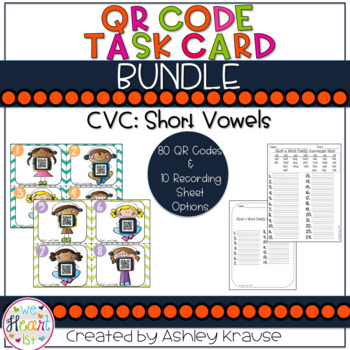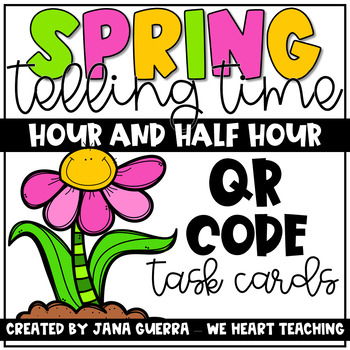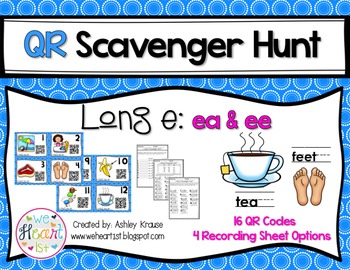Here are the top 5 reasons I use QR codes in my classroom:
1. Students get up and moving to scan the codes. We know that our little firsties can't sit still for too long. We place the codes around the classroom and sometimes even in the hallway. They enjoy the opportunity to walk around and move while learning!
 |
| We use QR Reader or Qrafter to scan QR codes. |
3. It promotes collaboration. I love to see kids working together, sharing qr codes and taking turns. There have been a few lessons where I partner the kids up and they share one recording sheet. This provides a time for them to discuss the problem/answer and agree on one and then check their work.
4. Technology is engaging. For some reason practicing math facts, learning about fractions, or writing your spelling words just seems a lot more FUN with some technology in your hands. If you're up for trying something new, QR codes are a quick and easy solution. There isn't a lot of prep work on the teacher's part and your students will be instantly engaged with the novelty of scanning.
5. QR codes seem to make a "worksheet" come alive. There's something about scanning a QR code that makes my students forget they are doing a worksheet. I have to say my students are very focused and remain on task when they are working on a worksheet with QR codes.
4. Technology is engaging. For some reason practicing math facts, learning about fractions, or writing your spelling words just seems a lot more FUN with some technology in your hands. If you're up for trying something new, QR codes are a quick and easy solution. There isn't a lot of prep work on the teacher's part and your students will be instantly engaged with the novelty of scanning.
5. QR codes seem to make a "worksheet" come alive. There's something about scanning a QR code that makes my students forget they are doing a worksheet. I have to say my students are very focused and remain on task when they are working on a worksheet with QR codes.
If you're interested in trying out QR codes in your classroom, we have several resources in our TPT stores (Jana Guerra & Ashley Krause.) Here are a few of our favorites.
 | |||
| Customer Review: My class loved these! The incorporation of technology and movement made this one of their favorite centers. Thank you for your hard work! (This is my #2 best selling product!) |
 |
| Customer Review: Telling time is our next unit to tackle. I think this will be a great way to get my kids actively involved in learning how to tell time. |
 |
| There are several vowel team QR code activities available here. |












